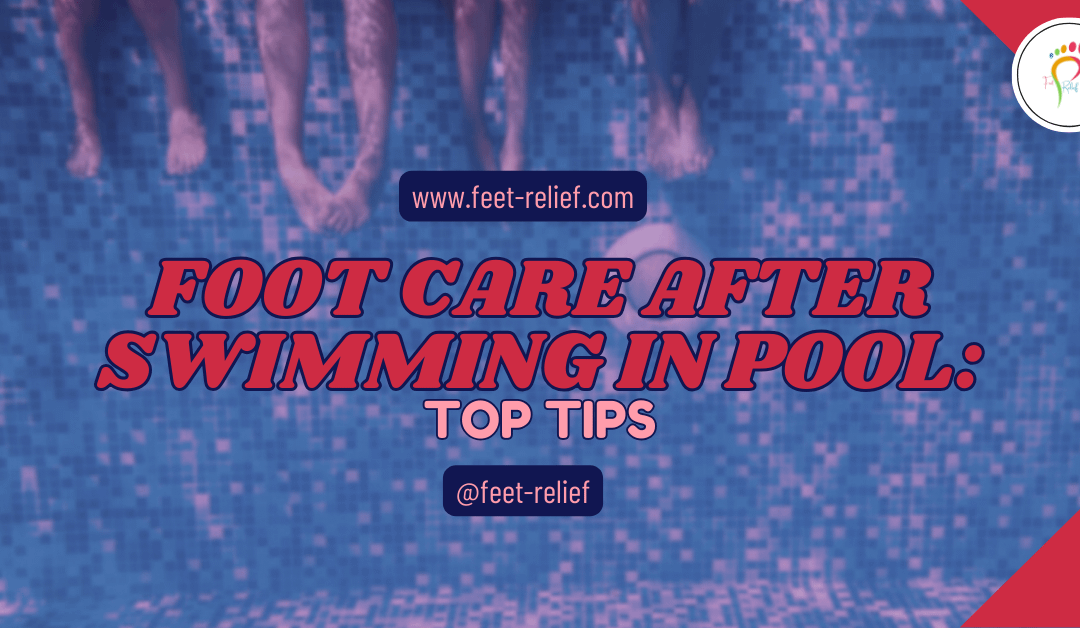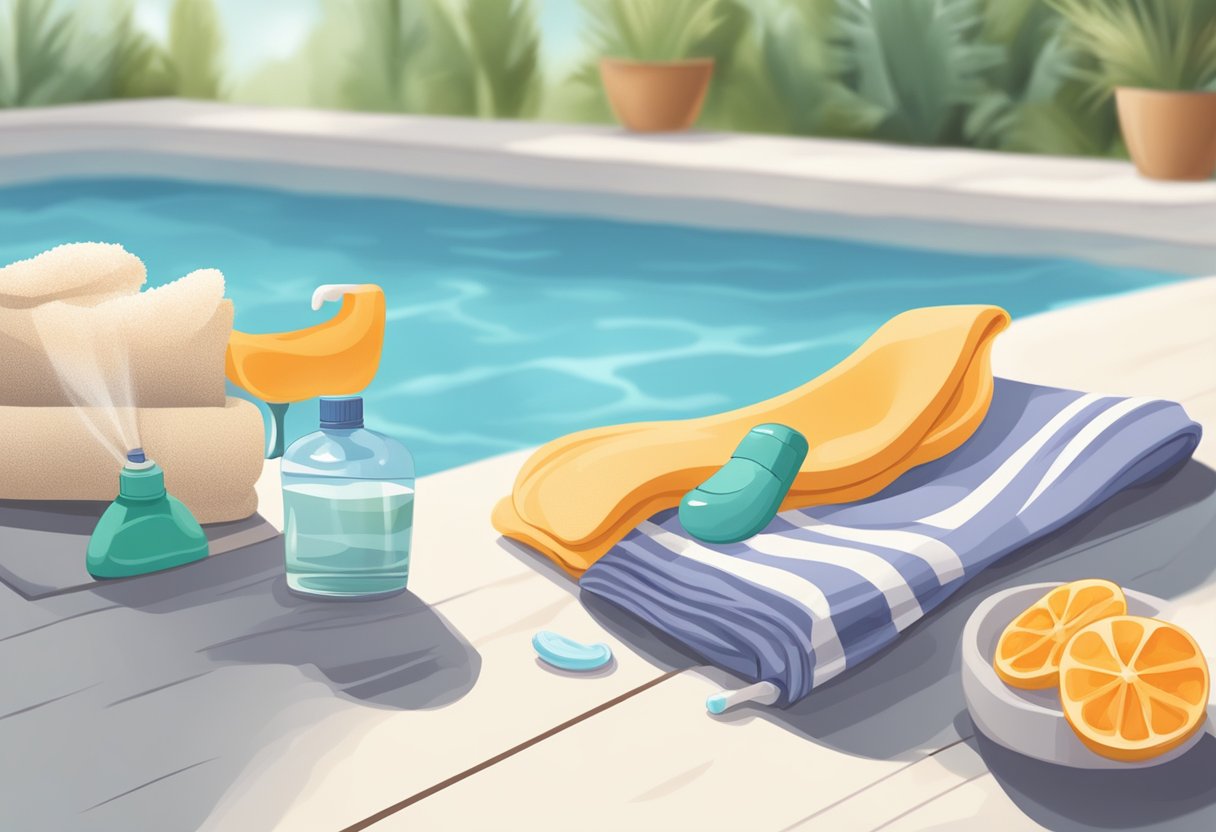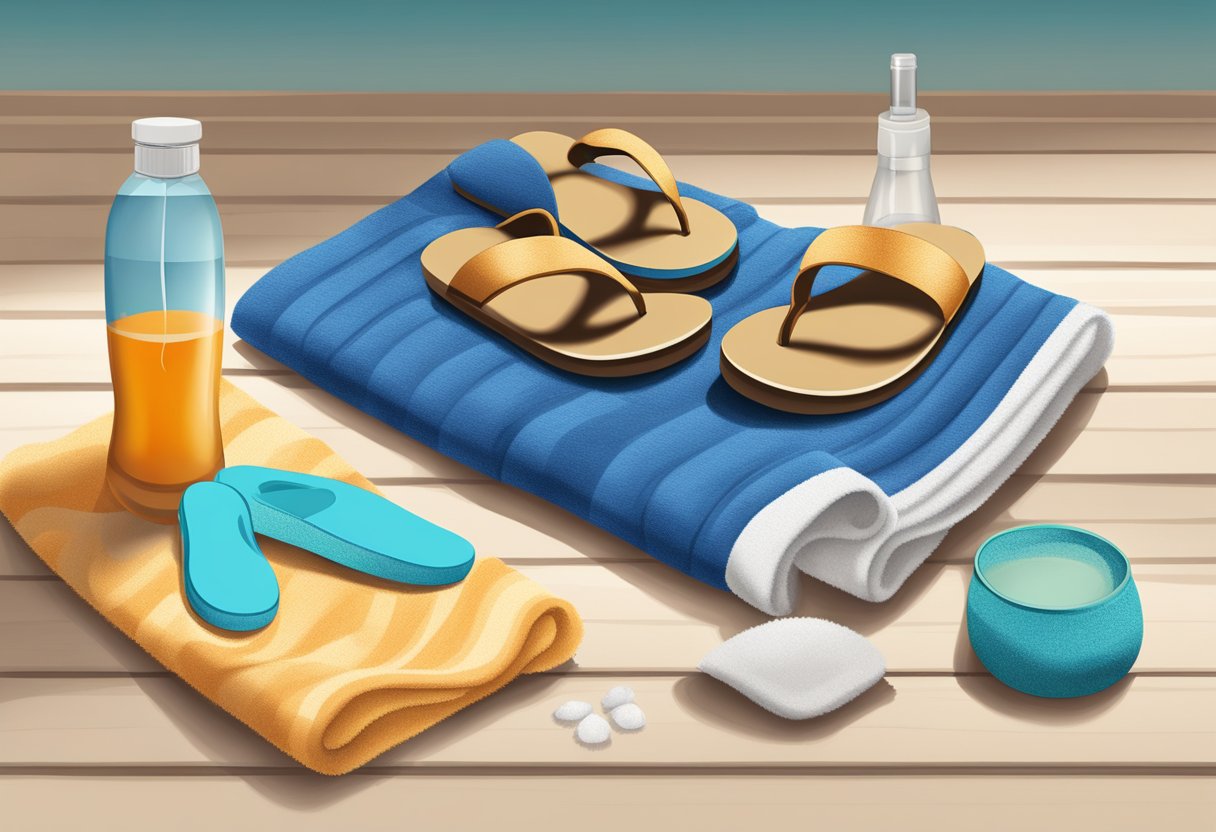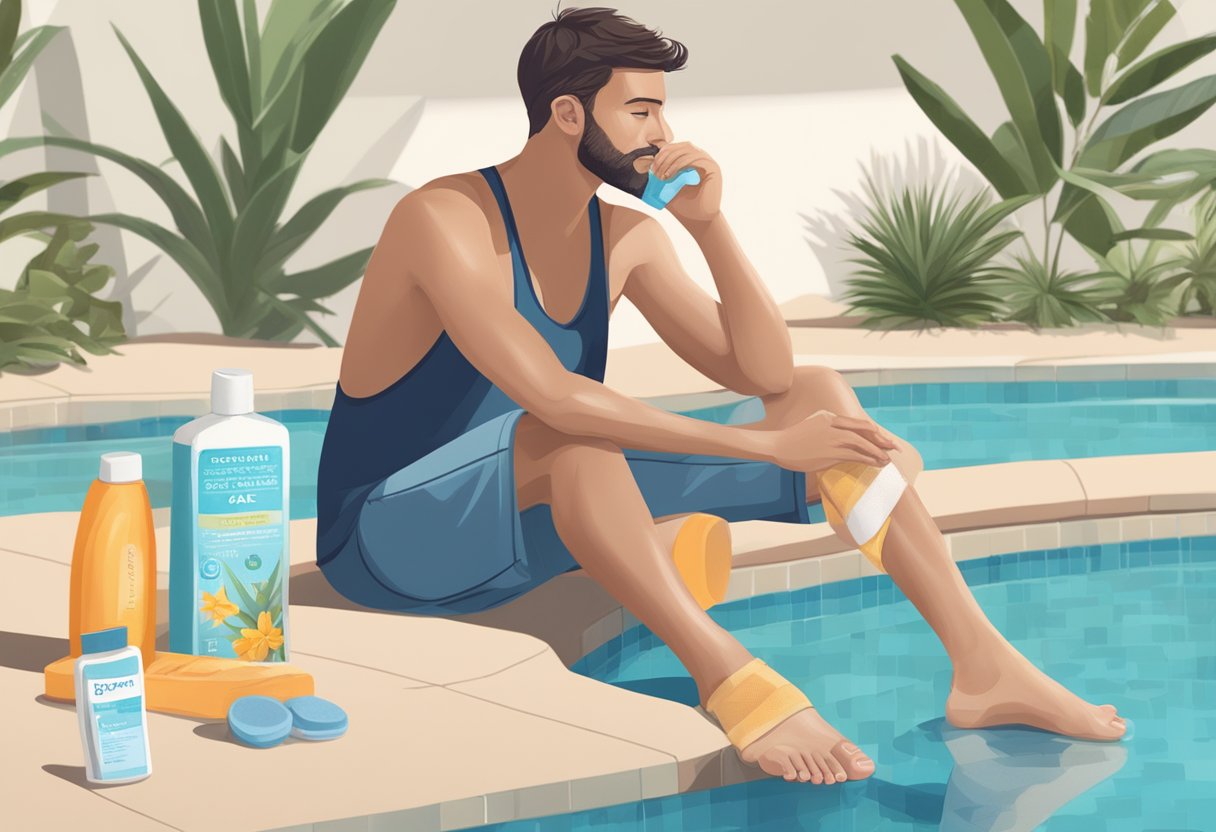
Foot Care After Swimming in Pool: Top Tips
Foot care after swimming in a pool? Let’s be honest, who doesn’t love splashing around on a hot day? But chlorine and forgetting your flip-flops by the locker can wreak havoc on your feet. Fear not, fellow pool enthusiast! This guide will help you keep your feet happy and healthy after every swim, so you can keep cool and keep coming back for more.
Foot Care After Swimming in Pool: Essential Tips for Healthy Feet
Many of us have options for swimming year-round. It’s a great way to relax and unwind, and also great exercise. Swimming in a pool can be refreshing, but it can also take a toll on your feet. Knowing proper Foot Care After Swimming in Pool helps keep your feet healthy and happy!
To keep your feet healthy, rinse them with warm water after swimming and make sure to dry them thoroughly. Neglecting foot care can lead to issues like cracked skin, infections, and discomfort. Be sure to dry between your toes, too.
Pay attention to small changes in your feet, such as cuts or blisters.
Wearing flip-flops or water shoes while you’re around the pool can reduce the risk of picking up infections like athlete’s foot.
Pool toe can be avoided by keeping feet dry and wearing breathable footwear.
Keeping your feet moisturized helps prevent dryness and cracking.
Using a good quality foot cream after swimming can make a significant difference.
Don’t share towels as this can spread infections.
Rinsing off and drying feet carefully is essential for maintaining healthy, happy feet.

Key Takeaways
- Rinse and thoroughly dry feet after swimming.
- Wear flip-flops or water shoes around the pool.
- Moisturize feet to prevent dryness and cracking.

Understanding the Importance of Foot Care Post-Swimming
After swimming in a pool, it is crucial to pay attention to your feet.
Chlorinated water can have several effects on your skin, and neglecting foot care can lead to various risks and infections.
Effects of Chlorinated Water on Skin
Chlorine keeps the pool clean, but it can be a little rough on your skin. After a long swim, that chlorine can strip away your natural oils, leaving your skin feeling tight and rough. Your feet, especially since they’re often underwater the most, are at even greater risk.
Dry skin can crack, which is not only uncomfortable but also opens the door for infections.
To keep your feet happy and healthy, the key is moisture! Apply a good moisturizing lotion after swimming to replenish what the chlorine took away. Pay extra attention to your heels and those sometimes-forgotten spaces between your toes.
And don’t forget, rinsing off that chlorine right after you leave the pool is the first step to happy, healthy feet!
Risks of Neglecting Foot Care
Skip the foot care after swimming? Big mistake! Not taking care of your feet after a dip can lead to some serious problems.
Athlete’s foot, a nasty fungal infection, loves damp places like pool areas. It’s super contagious and can spread easily if your feet aren’t clean and dry.
So, here’s the plan: always dry your feet completely. Use a clean towel and don’t forget those tricky spots between your toes – that’s where moisture loves to hide.
If you ever notice any itching, redness, or anything else suspicious, consider using an anti-fungal powder or cream to nip it in the bud.
Bonus tip! Wearing flip-flops or water shoes in locker rooms and pool areas can be a lifesaver. They help prevent infections and even injuries from lurking around.
Initial Steps for Foot Care After Swimming
The key to happy feet after swimming? It all starts with a good rinse! Getting rid of those pool chemicals is important because they can be harsh on your skin, drying it out and causing cracks that can get uncomfortable. Plus, if you don’t rinse them off, they can create an environment for nasty infections to grow.
Rinsing Techniques
After a refreshing dip in the pool, rinsing your feet is a must. Chlorine and other pool chemicals can be real skin bullies, drying it out and causing cracks and irritation.
To keep your feet happy, use cool or lukewarm water for a gentle rinse. Hot water might feel nice, but it actually strips away your skin’s natural oils, leaving it even more prone to dryness.
Don’t forget those tricky areas! Be sure to clean between your toes and around your nails where all that chlorine loves to hide. If you have sensitive skin, a mild soap is your best friend. And if you have any cuts or scrapes, be extra gentle to avoid further irritation.
Drying Feet Thoroughly
Once you’ve rinsed your feet, give them a good drying. Remember, moisture loves to hang out between your toes, and that’s where bacteria and fungi like to set up shop. That can lead to some not-so-pleasant infections.
Use a clean, dry towel and make sure you get in between those toes. You might even consider using a separate smaller towel just for that area – it’s a good way to keep things extra clean.
Letting your feet air dry for a few minutes before putting on socks and shoes can also help. This gives any lingering moisture a chance to escape.
If you’re prone to sweaty feet, using foot powder can help keep them feeling dry and fresh.
This whole drying routine might seem like a bit of extra work, but trust me, it’s worth it! It can greatly reduce your chance of getting athlete’s foot or other yucky fungal infections.
Always opt for moisture-wicking socks if you need to wear them immediately after drying. These will help keep your feet dry longer.
In-Depth Cleaning Strategies
After swimming, it’s important to deeply clean your feet to avoid any infections or irritation. Pay close attention to exfoliating dead skin and thoroughly cleaning your toenails to keep your feet healthy.
Exfoliating Dead Skin
Use a pumice stone or foot scrub to gently rub away dead skin cells. This helps to prevent calluses and cracked heels.
Steps:
- Soak your feet in warm water for 10-15 minutes.
- Apply a small amount of foot scrub or soap.
- Gently rub the pumice stone or foot scrub in circular motions.
- Rinse and dry your feet thoroughly.
Regular exfoliation not only keeps your feet soft but also reduces the chances of fungal infections.
Deep-Cleaning Your Toenails
Dirt and bacteria can accumulate under your toenails, especially after swimming.
Steps:
- Trim your toenails straight across to avoid ingrown nails.
- Use a soft brush and mild soap to scrub underneath your nails.
- Rinse well with warm water.
- Dry your feet, focusing on the areas between your toes.
Using an antibacterial wash can also help in keeping infections at bay.
Don’t forget to moisturize your nails and surrounding skin after cleaning for hydration.
Moisturizing Techniques
After swimming in a pool, proper foot care is essential to prevent dryness and cracking. This section covers the best moisturizers to use and how to apply them effectively.

Selecting the Right Moisturizer
Choosing the right moisturizer is key to keeping your feet soft and hydrated.
Look for products that contain humectants like hyaluronic acid or glycerin. These substances attract moisture to the skin, making it feel soft and smooth.
Emollients like shea butter or cocoa butter create a protective barrier on the skin.
This helps to lock in moisture and keep irritants out.
Some moisturizers also contain ceramides, which can help restore the skin’s natural barrier.
For added benefits, consider moisturizers with essential oils like lavender or tea tree oil, which have soothing and antibacterial properties.
Avoid products with alcohol or strong fragrances, as these can further dry out your skin.
Application Methods for Optimal Absorption
Proper application of moisturizer ensures that your feet get the maximum benefit.
Start by washing your feet thoroughly with mild soap and warm water.
Pat them dry with a clean towel, making sure to get between your toes.
Apply a generous amount of moisturizer to your feet.
Use gentle, circular motions to massage it into your skin.
This helps improve blood circulation and ensures the product is evenly distributed.
Pay extra attention to any dry or rough areas, like the heels and the balls of your feet.
For best results, apply moisturizer right after swimming and before bed.
Wearing moisture-locking socks overnight can enhance absorption and keep your feet hydrated longer.
If your feet are extremely dry, consider soaking them in cold whole milk for 10 minutes before applying moisturizer to soften the skin.
Preventive Measures
Taking proper care of your feet before and after swimming can prevent common issues like infections and skin damage. Focus on wearing the right footwear and using protective barriers to keep your feet safe.
Proper Footwear for Pool Use
Wearing the right type of footwear is crucial for protecting your feet at the pool.
Choose waterproof sandals or aqua shoes. These should be worn at all times when walking around the pool area.
They help prevent contact with surfaces that may harbor fungi or bacteria.
Look for footwear with non-slip soles to avoid accidental falls on wet surfaces.
Make sure they fit well but allow for some airflow to keep your feet dry.
Avoid sharing your sandals with others to lessen the risk of spreading infections.
Using Protective Barriers
Using protective barriers can significantly reduce the risk of skin issues.
Apply a thick layer of petroleum jelly or a specialized foot cream before putting on your footwear.
This creates a barrier between your skin and any irritants.
After swimming, rinse your feet with fresh water and apply an antifungal spray or powder.
Make sure to thoroughly dry your feet, especially between the toes. This helps prevent moisture from causing problems, such as athlete’s foot.
Avoid sharing towels with others, as they can carry harmful bacteria or fungi.
Use clean, dry towels to keep your feet as hygienic as possible.
Addressing Common Foot Problems
Swimming in pools can lead to various foot problems. Knowing how to prevent and treat these issues is key to maintaining healthy feet.

Athlete’s Foot and Fungal Infections
Athlete’s foot and other fungal infections thrive in damp environments like swimming pools and locker rooms.
These infections can cause itching, redness, and peeling skin between your toes.
To prevent these infections, wear flip-flops or waterproof sandals in communal areas.
Keep your feet clean and dry by washing them with soap and water and thoroughly drying them afterward.
If you do get a fungal infection, over-the-counter creams or sprays can help.
Look for products containing clotrimazole or terbinafine. If symptoms persist, consult a healthcare professional for stronger treatments.
Dryness and Cracking
Exposure to chlorinated pool water can strip your skin of natural oils, leading to dryness and cracking. This makes your feet more prone to pain and infections.
To combat dryness, moisturize your feet regularly with a thick cream or ointment.
Apply it right after drying your feet to lock in moisture.
Choose products with ingredients like urea or glycerin for the best results.
Avoid walking barefoot on rough surfaces, and consider wearing socks that keep your feet cushioned.
If severe cracking occurs, a pumice stone can help remove dead skin before moisturizing.
Dealing With Blisters and Cuts
Blisters and cuts can develop from walking barefoot on hot pool decks or rough surfaces.
These can be painful and may get infected if not properly treated.
To prevent blisters, wear protective footwear when walking around the pool area.
Choose shoes that fit well and are designed for water use.
If you get a blister, don’t pop it as it can lead to infection.
Instead, protect it with a bandage and keep it clean and dry.
For cuts, wash the area with soap and water, apply an antibiotic ointment, and cover with a sterile bandage.
Advanced Foot Care Tips
Taking care of your feet after swimming requires more than just drying them off.
Advanced tips like regular pedicures and foot muscle strengthening can make a big difference in maintaining healthy feet.

Regular Pedicure Benefits
Having regular pedicures can greatly benefit your foot health.
Pedicures help to remove dead skin and calluses, which can build up and cause discomfort or infection.
This is especially important after spending time in chlorinated pools.
Pedicures also include moisturizing treatments that keep your skin hydrated.
Dry feet are more prone to cracking and infections, so keeping them moisturized is essential.
Additionally, nail trimming during pedicures prevents ingrown toenails, which can be painful and lead to further issues if not properly managed.
You may consider professional help or do it yourself with a home pedicure kit.
Whether you choose to go to a professional or DIY, regular pedicures can keep your feet in better shape.
Strengthening Foot Muscles as an aid to Foot Care After Swimming in Pool
Strengthening your foot muscles is another important aspect of advanced foot care.
Strong foot muscles can help prevent common swimming-related foot problems like cramps and fatigue.
Simple exercises can make a significant difference.
Toe curls and ankle rotations are effective exercises for improving muscle strength.
Try picking up small objects with your toes or sitting with a resistance band around your foot and pushing against the band.
These exercises can be done at home and take just a few minutes each day.
Maintaining strong foot muscles helps with overall stability and can reduce the risk of injuries.
By incorporating these exercises into your routine, you can keep your feet strong and healthy, ready for your next swim.
Foot Care After Swimming in Pool: Keep Your Feet Happy!
So, we’ve covered all the bases for keeping your feet in tip-top shape after a refreshing pool dip. Remember, the key takeaways are to rinse off chlorine thoroughly, dry between your toes religiously, and moisturize like a champ. Think of your feet as little underwater explorers – they deserve some TLC after battling chlorine and navigating slippery pool decks!

Putting these tips into action is as easy as splashing into the shallow end. Pack a small travel-sized moisturizer and a separate towel for your feet in your pool bag. Slide on those flip-flops whenever you’re not swimming, and don’t be afraid to pamper yourself with a relaxing foot soak or a quick pumice stone treatment at home.
With a little extra care, your feet will be ready to take on your next pool adventure, leaving you feeling confident and comfortable whether you’re lounging poolside or conquering laps. Happy swimming!
Frequently Asked Questions
Many people experience foot issues after swimming. This section addresses various treatments and remedies for such problems.
How can one treat foot pain after swimming?
To treat foot pain after swimming, soak your feet in warm water with Epsom salt for about 15-20 minutes.
This can help relax your muscles and decrease inflammation.
What remedies are available for foot blisters caused by swimming pools?
If you develop blisters, keep the area clean and dry.
Apply an antiseptic ointment and cover the blister with a bandage.
Avoid popping the blister to prevent infections.
How can swimmers' foot be effectively treated?
Swimmer’s foot, or athlete’s foot, can be treated with over-the-counter antifungal creams.
Wash and dry your feet thoroughly, and apply the cream as directed.
What are common foot fungal infections associated with swimming pools and their treatments?
Common fungal infections include athlete’s foot and ringworm.
Treatment usually involves antifungal creams or sprays. Wear sandals in public pool areas to reduce the risk of these infections.
How can burning sensations in the feet be addressed after swimming?
For burning sensations, soak your feet in cool water and apply aloe vera gel. This can soothe the skin and reduce discomfort.
What steps should be taken to disinfect feet following pool use?
To disinfect your feet, wash them thoroughly with soap and water right after swimming.
Dry them completely, especially between the toes, to prevent fungal infections.
Using disinfection methods like PHMB can also help if you’re prone to irritation.
Feet Feeling Funky?
Tired of foot pain, diseases, and troubles slowing you down?
Join our community of foot enthusiasts at feet-relief.com and Facebook!
Discover engaging content, helpful product reviews, and connect with others who share your passion for happy, healthy feet!








